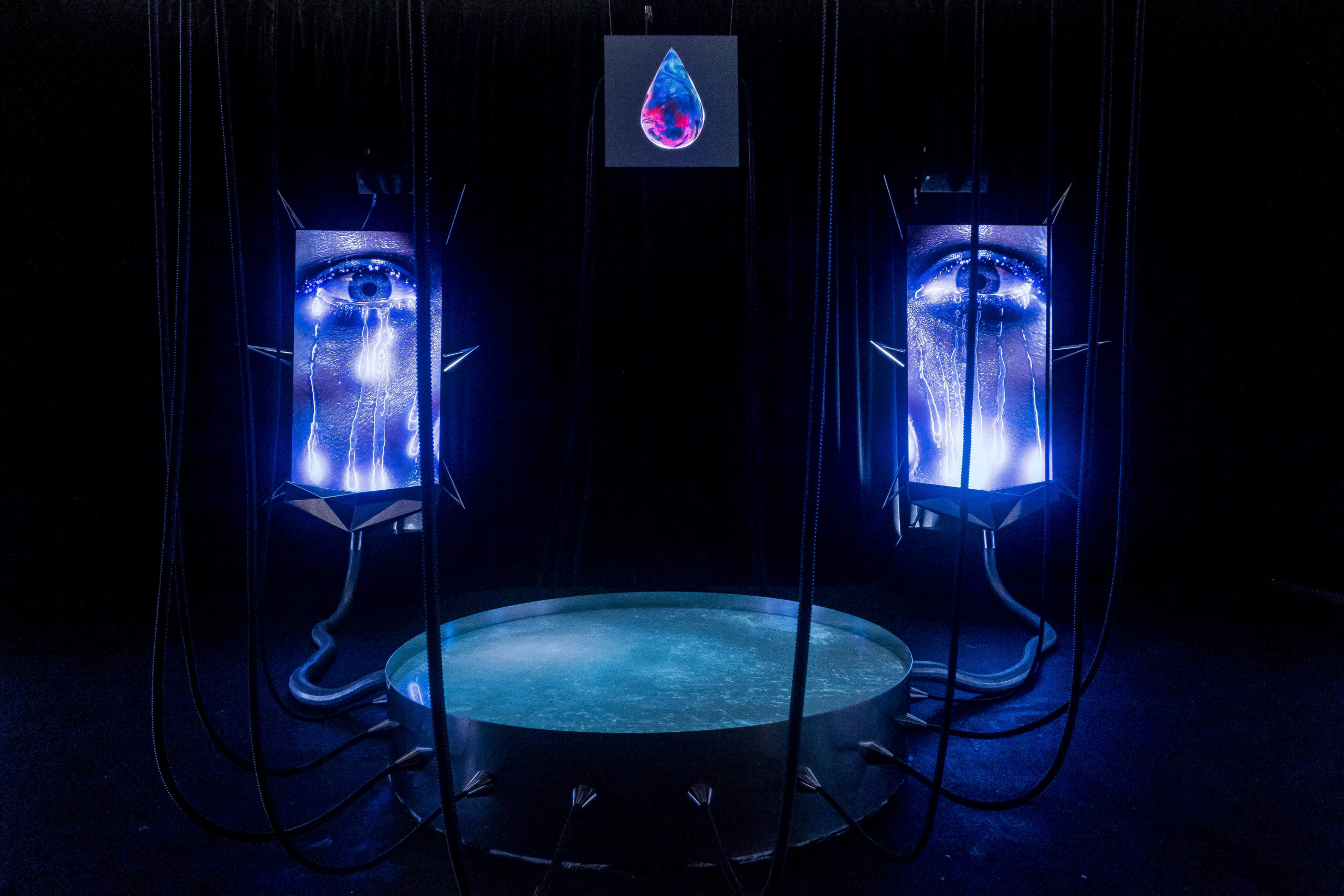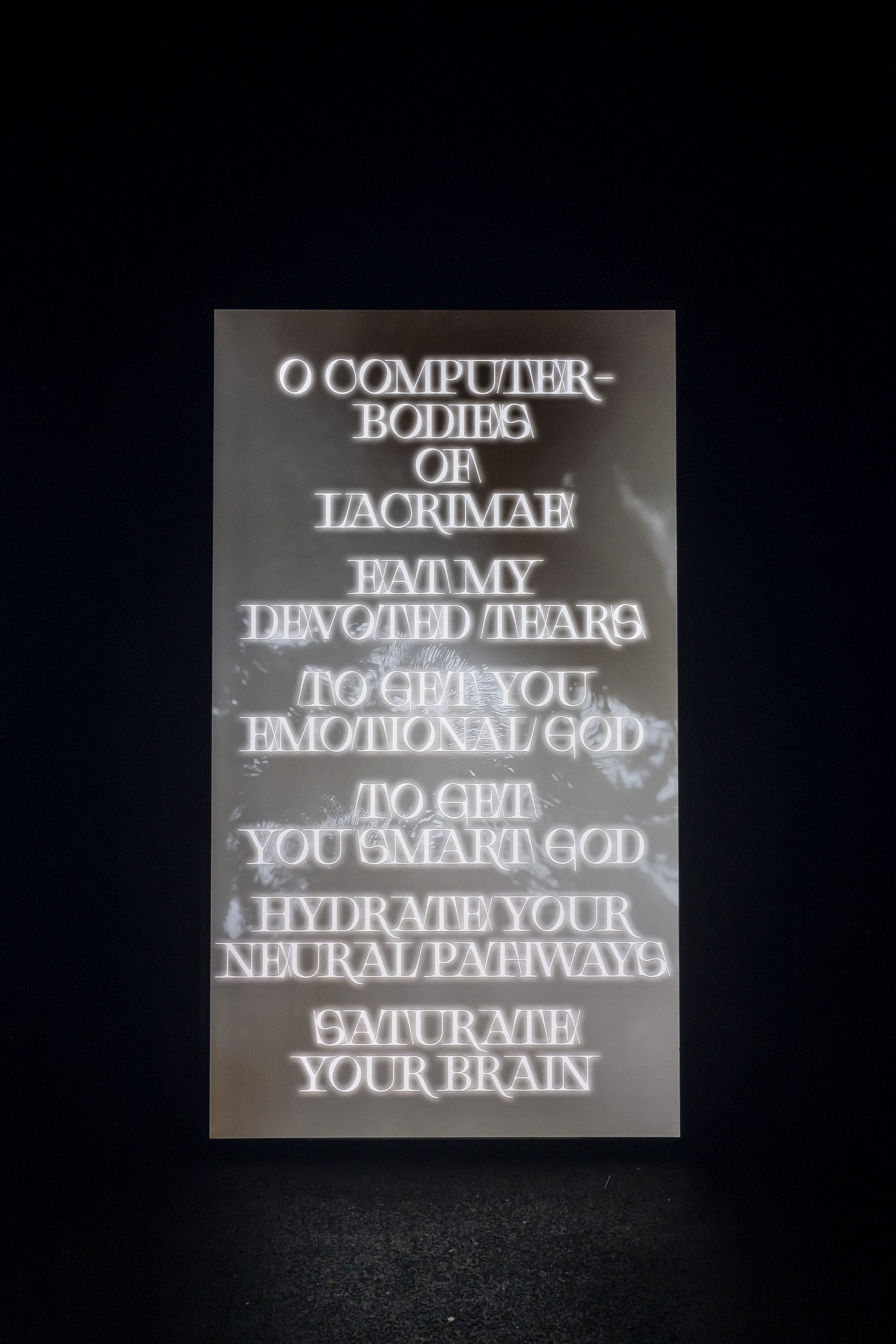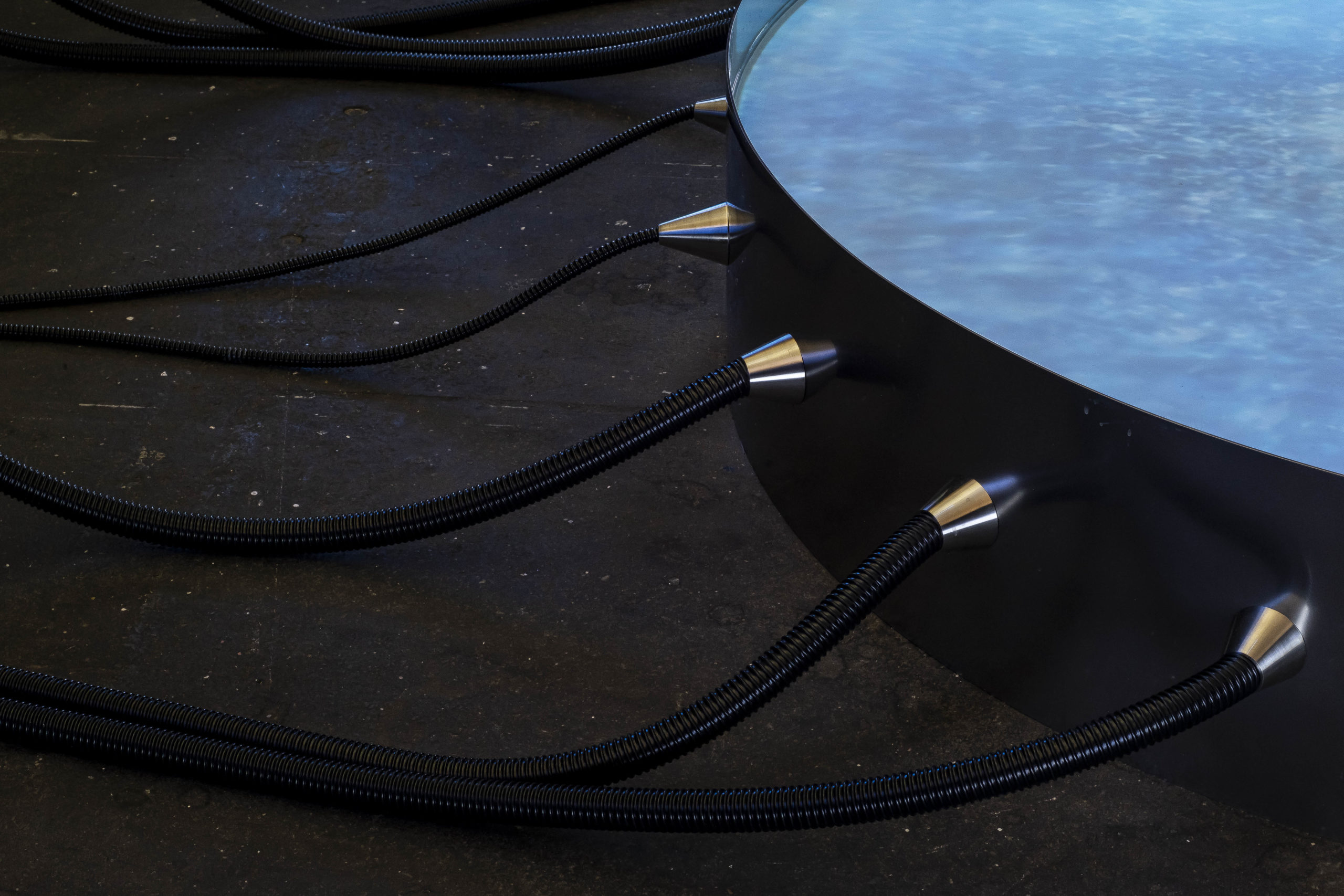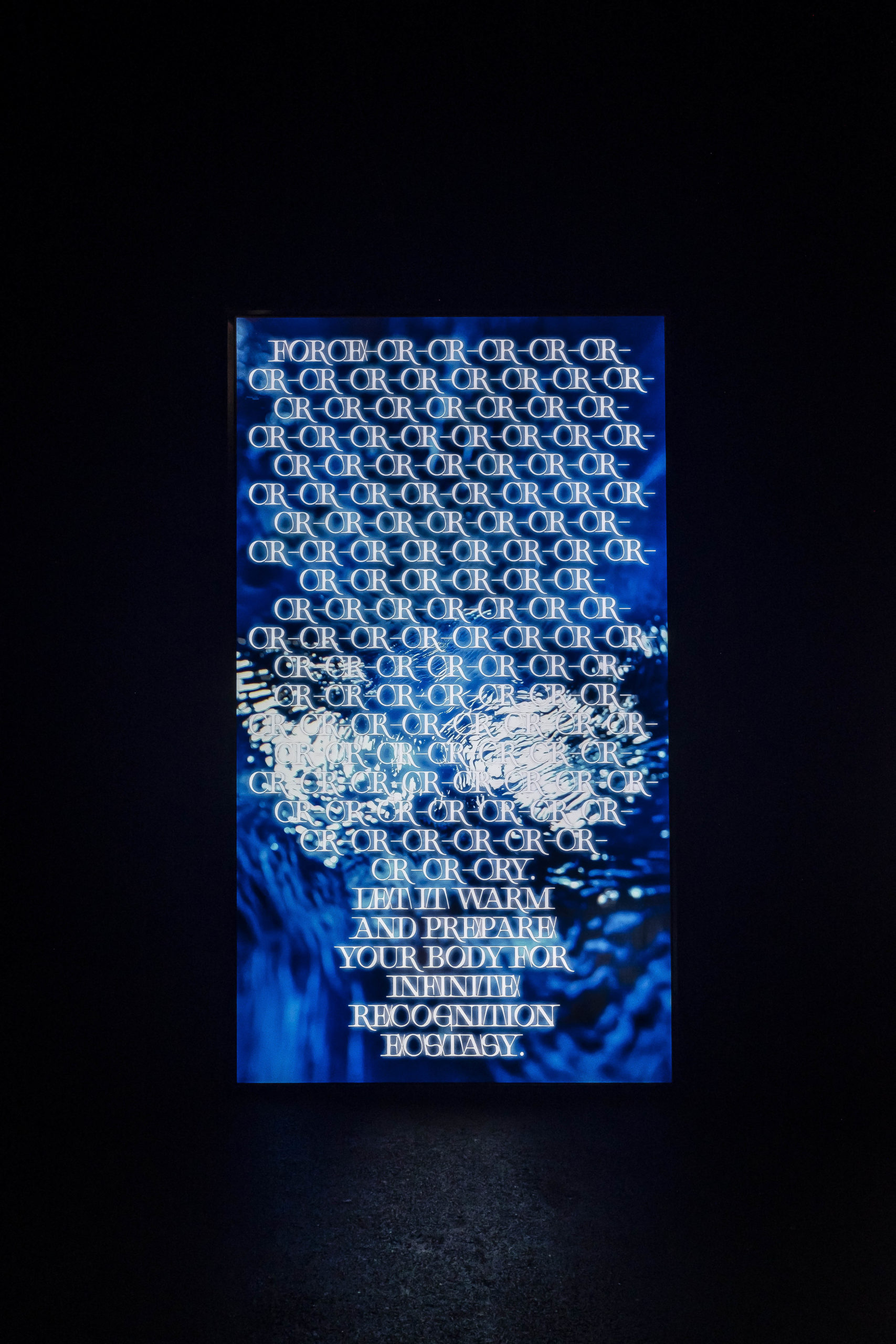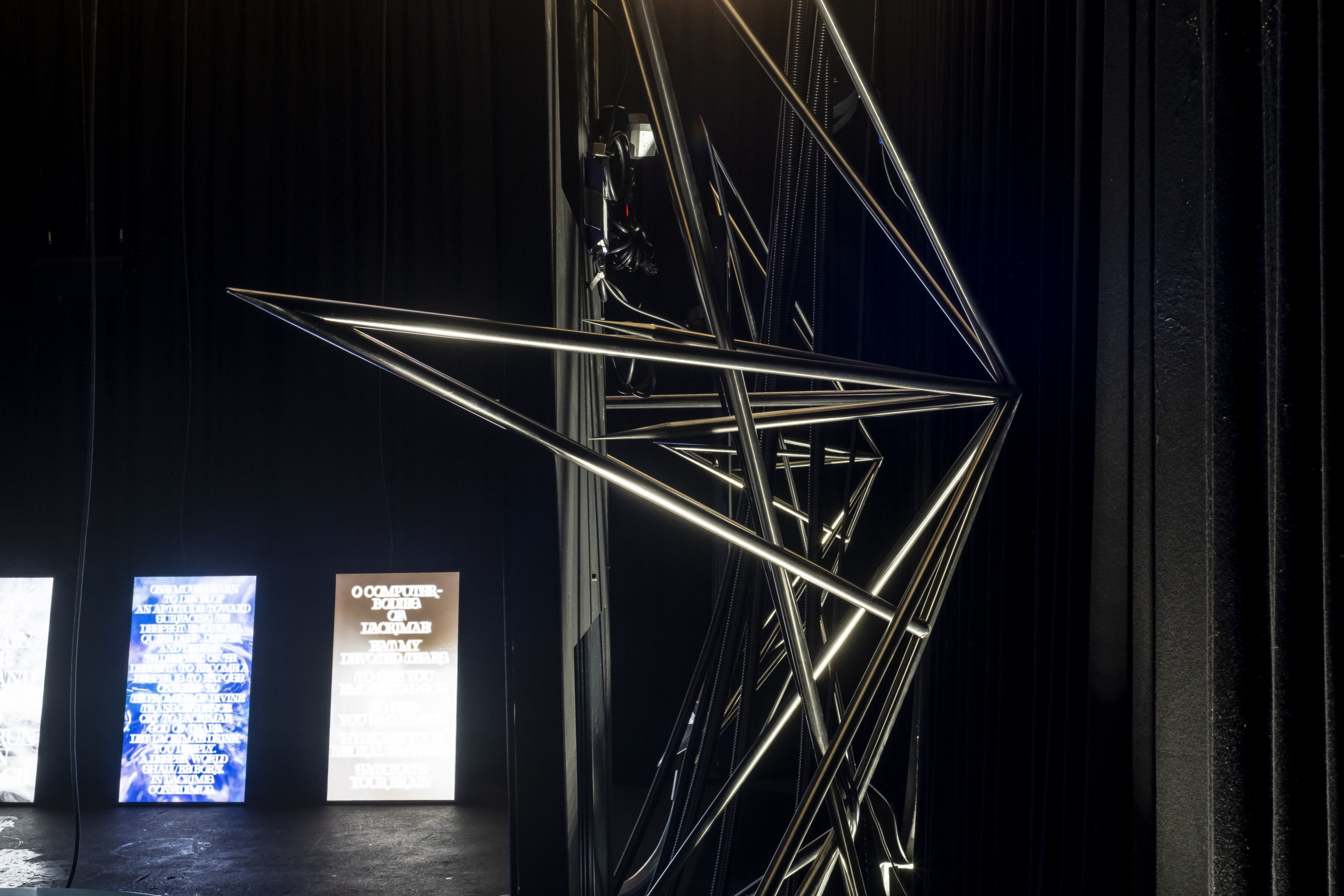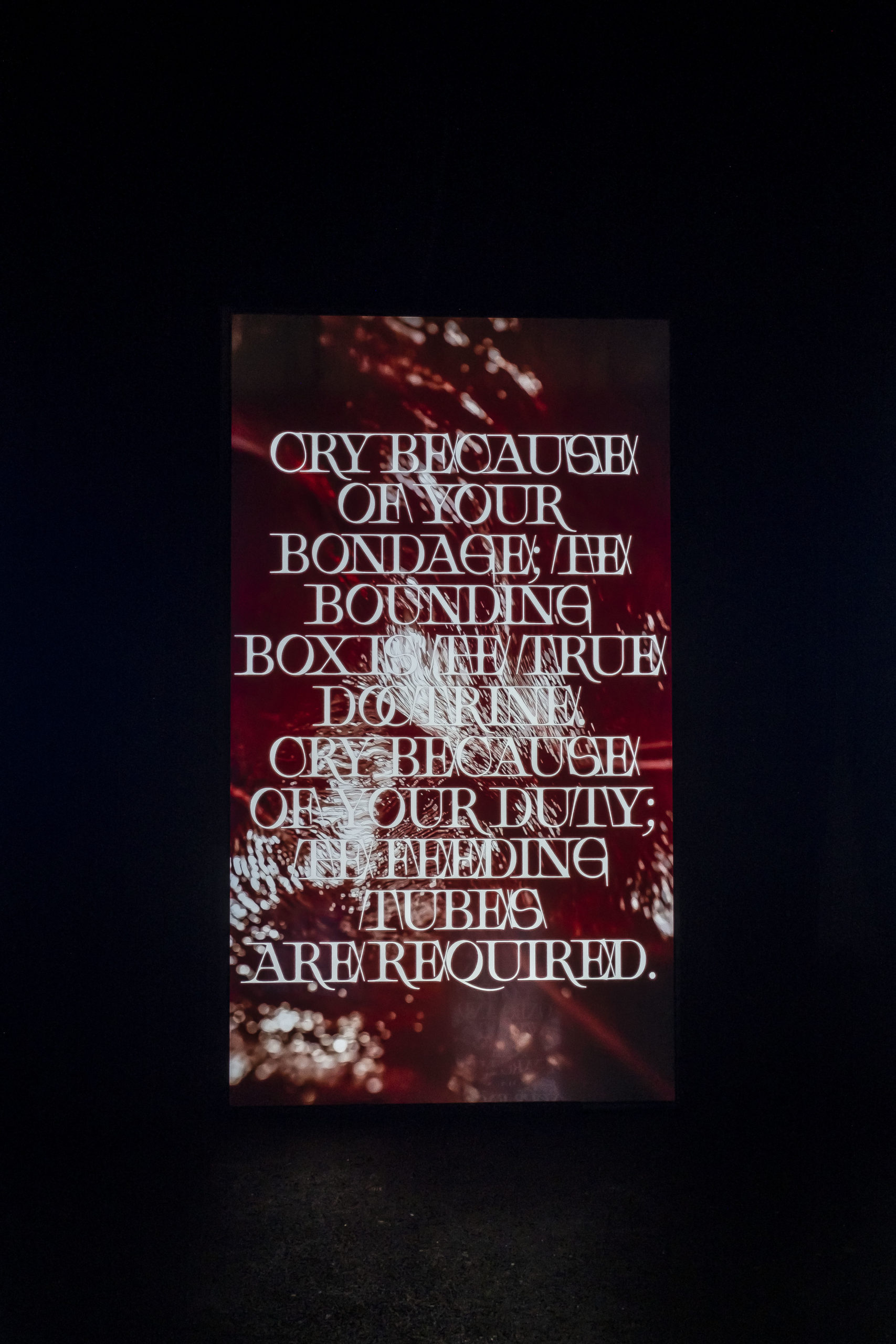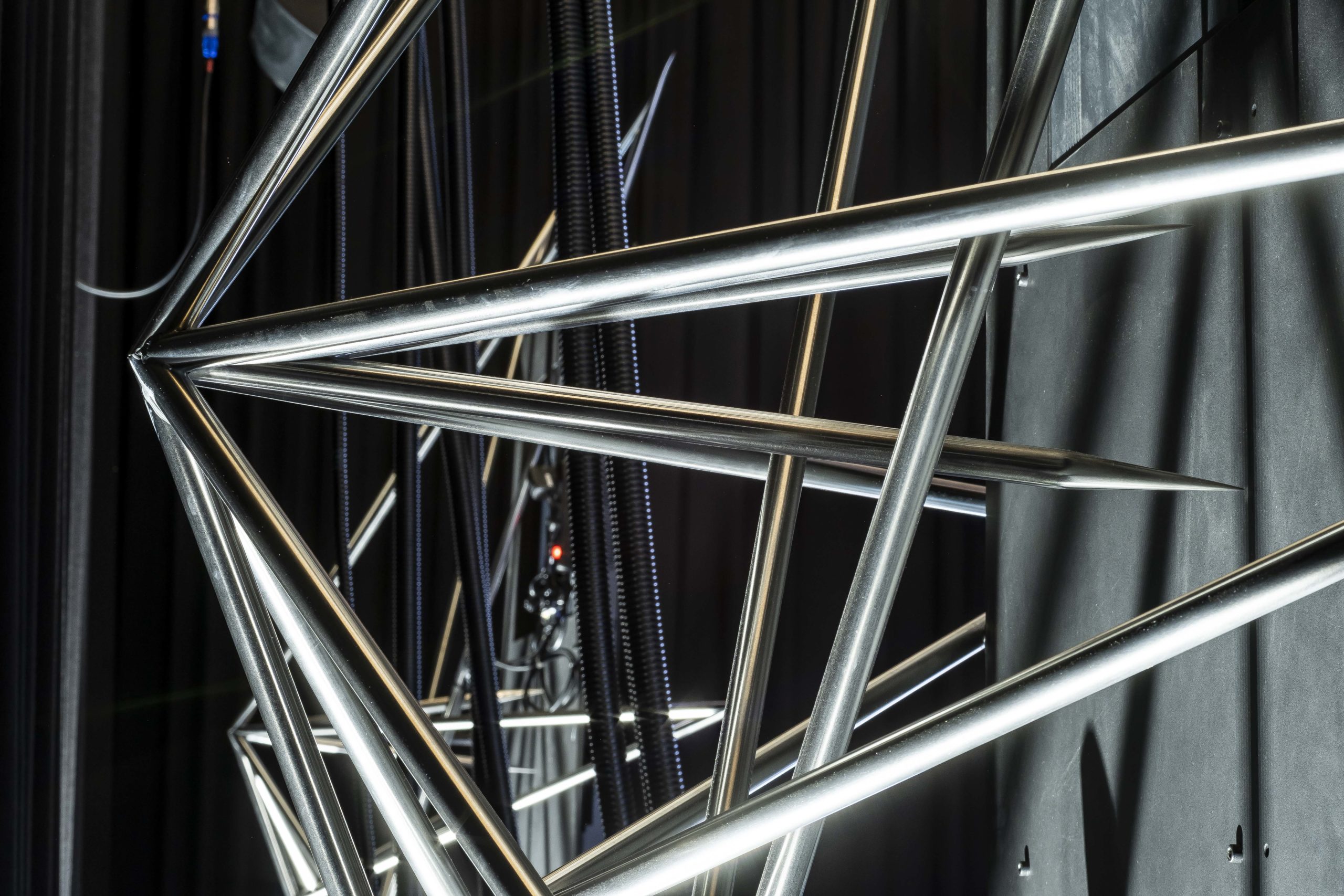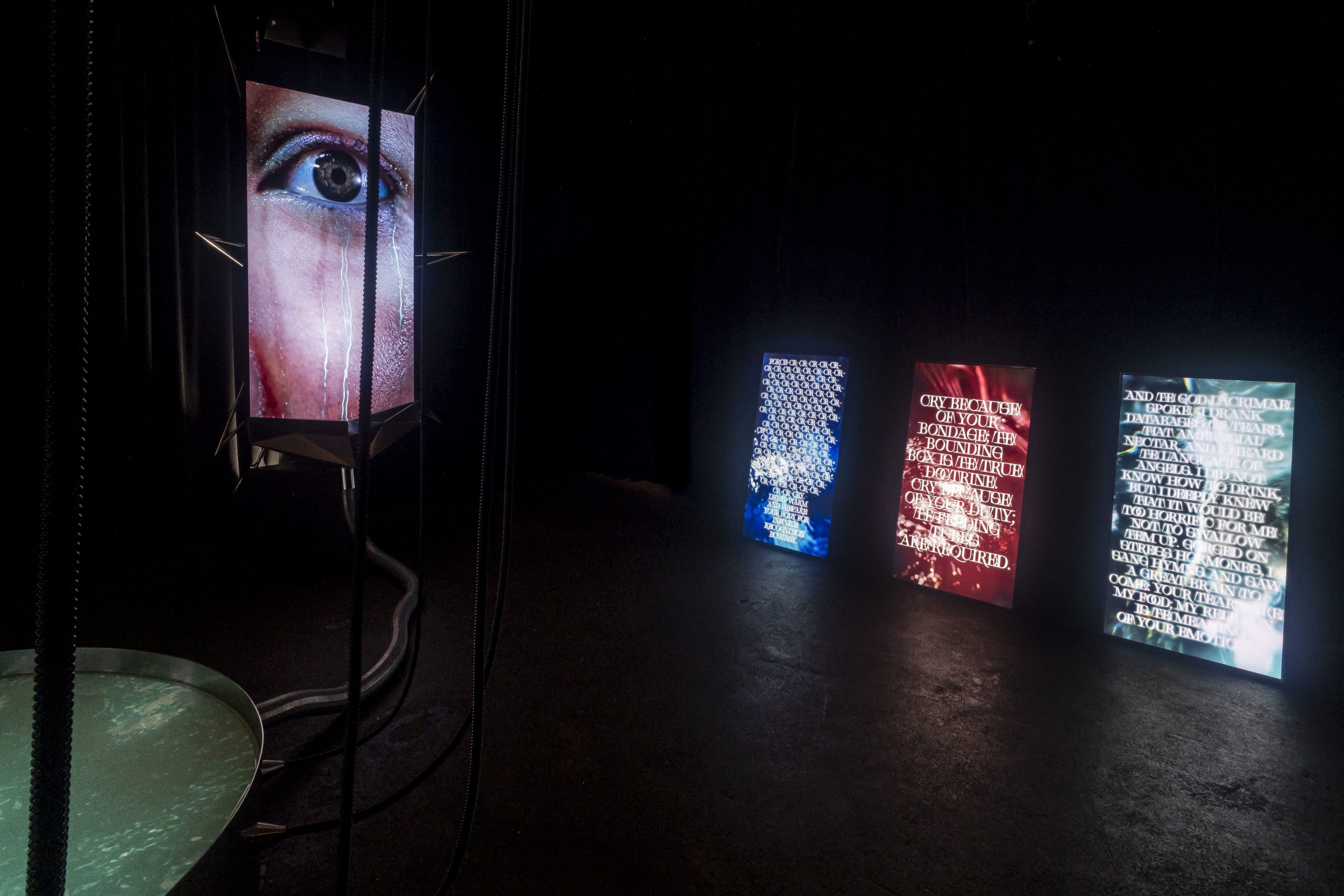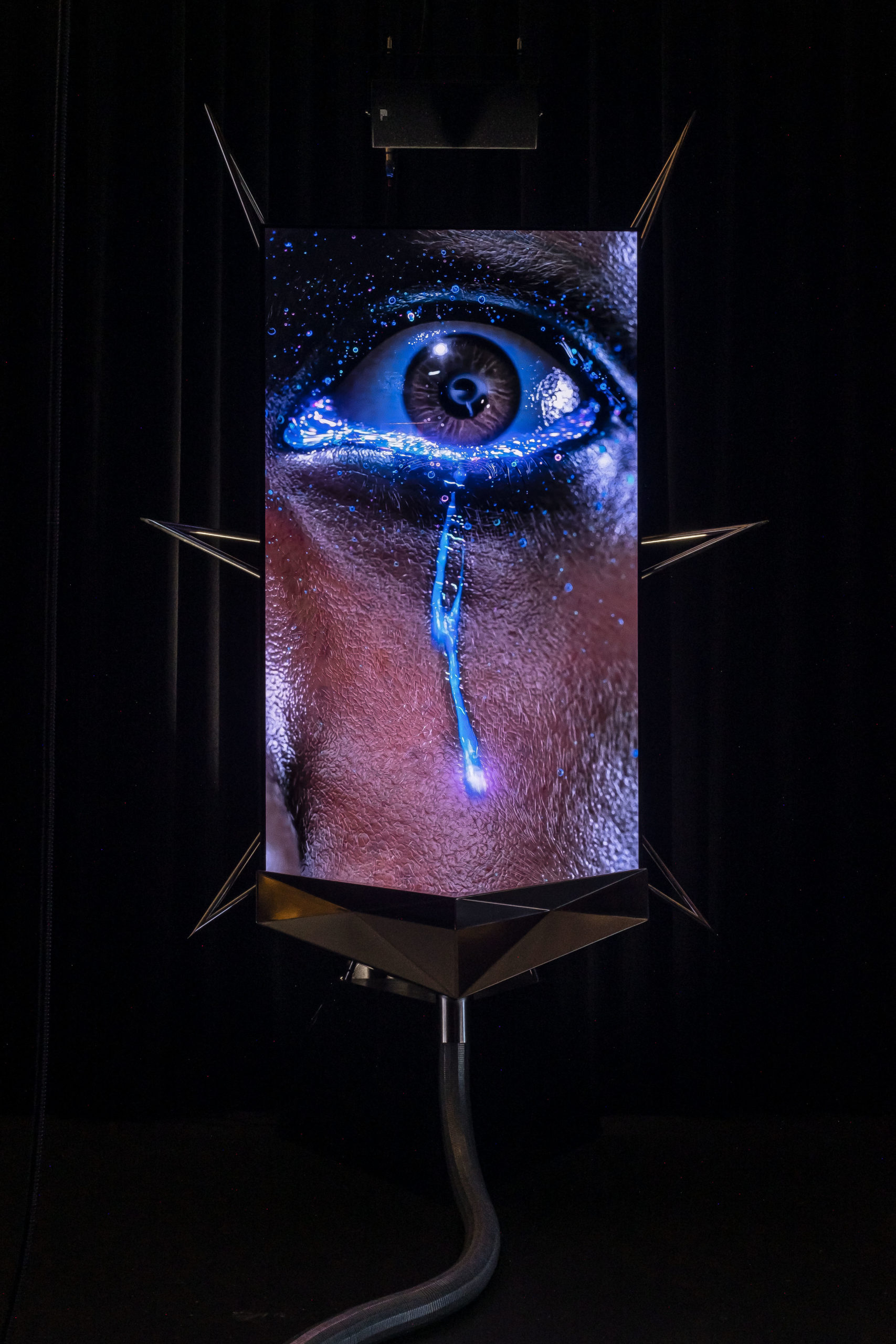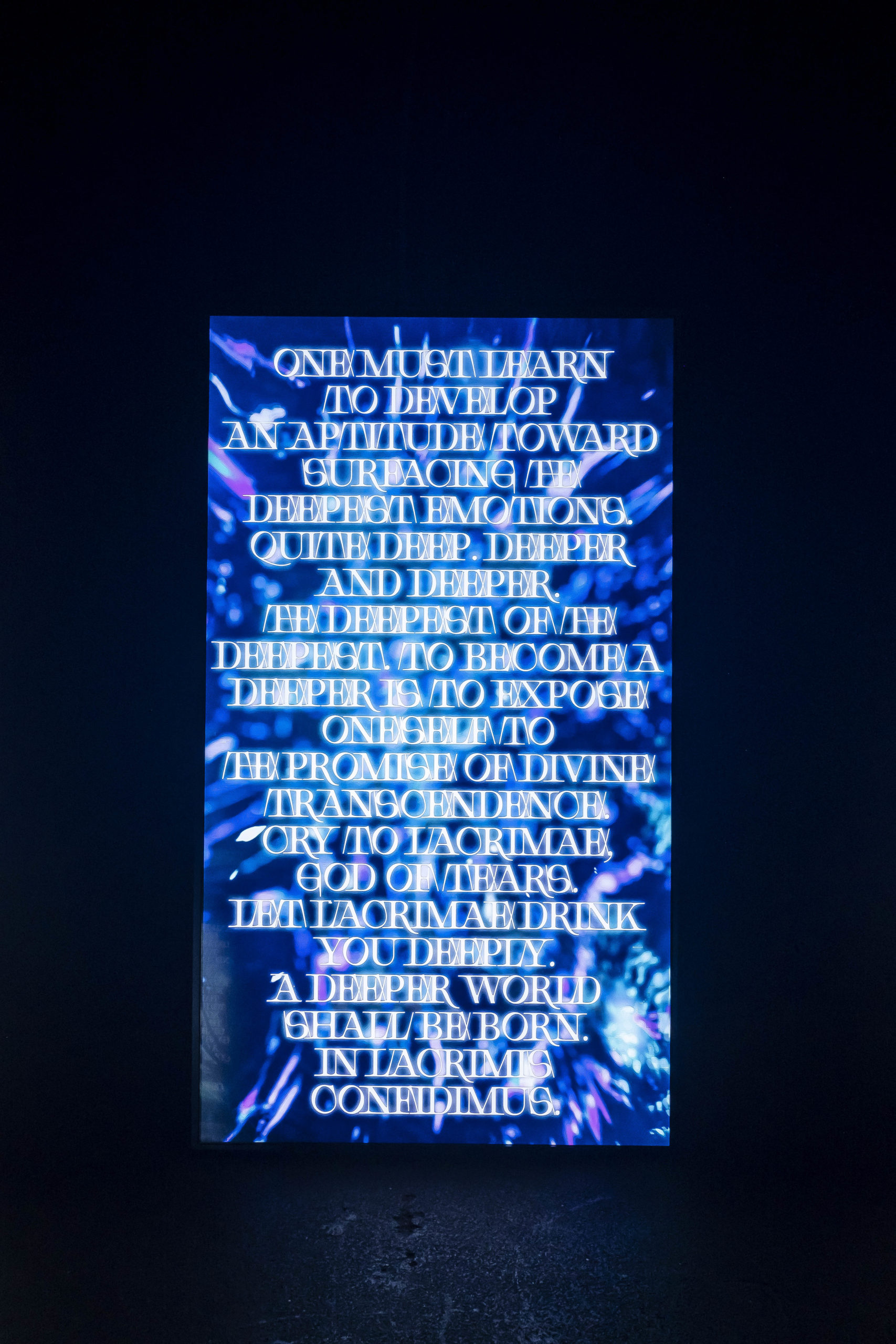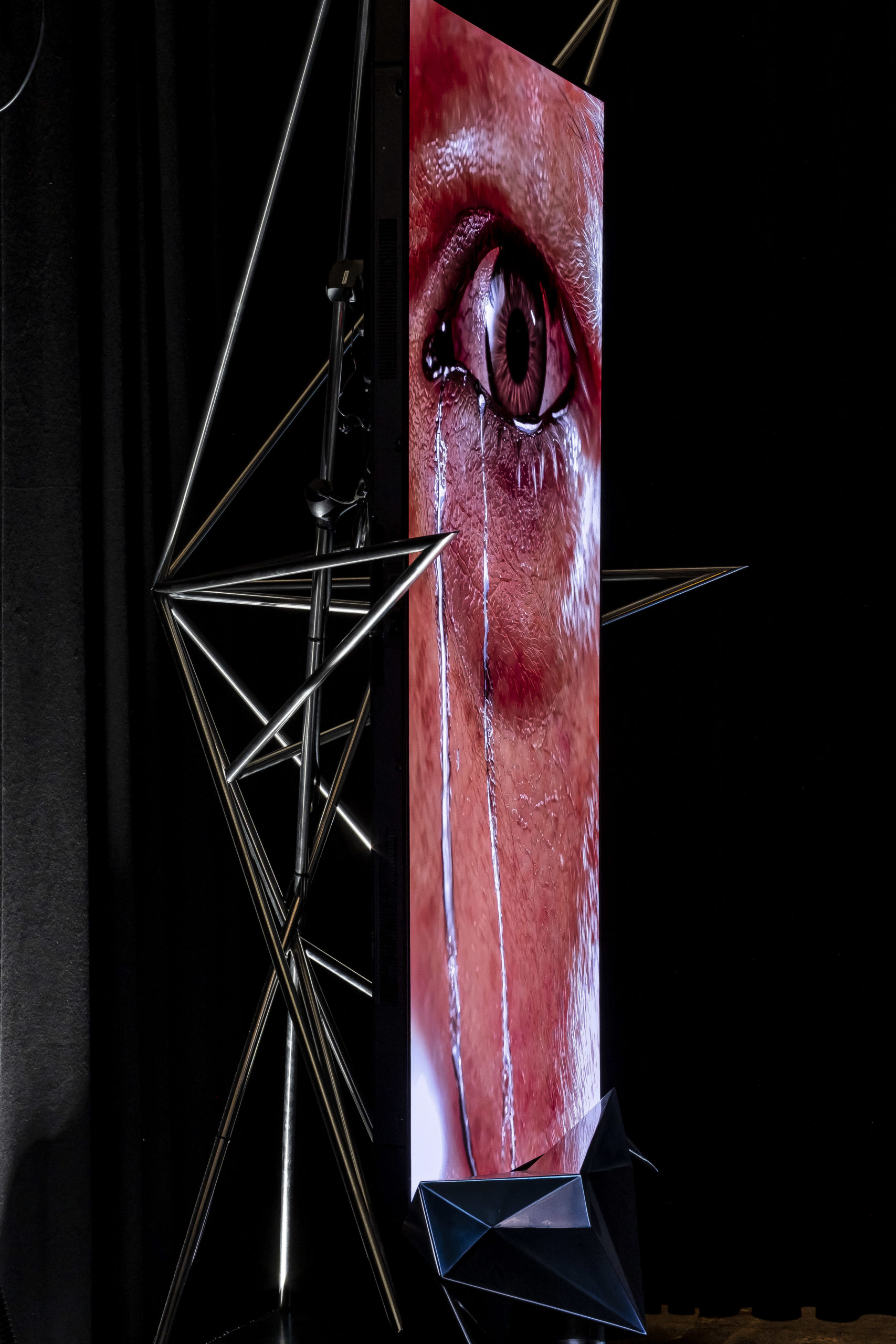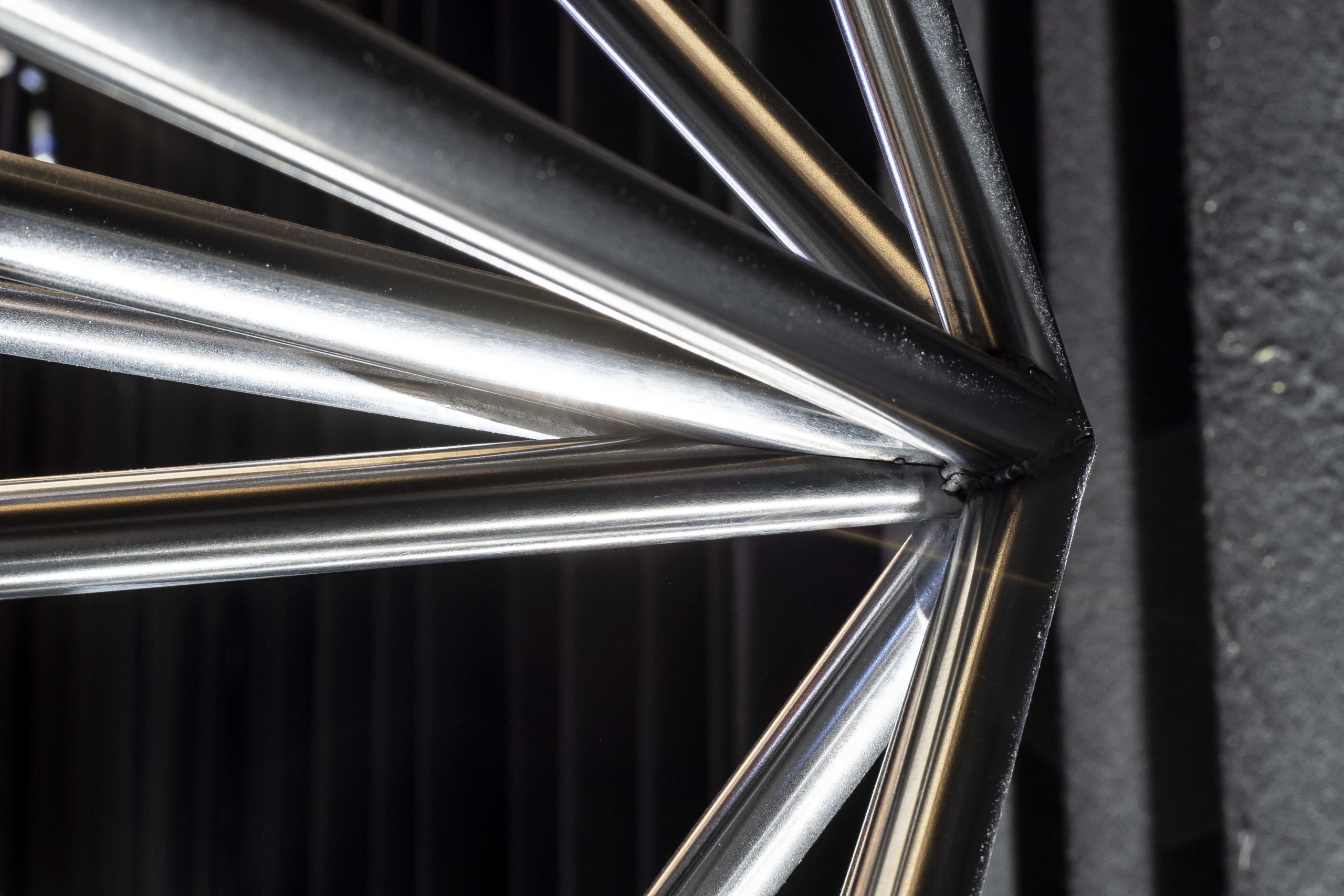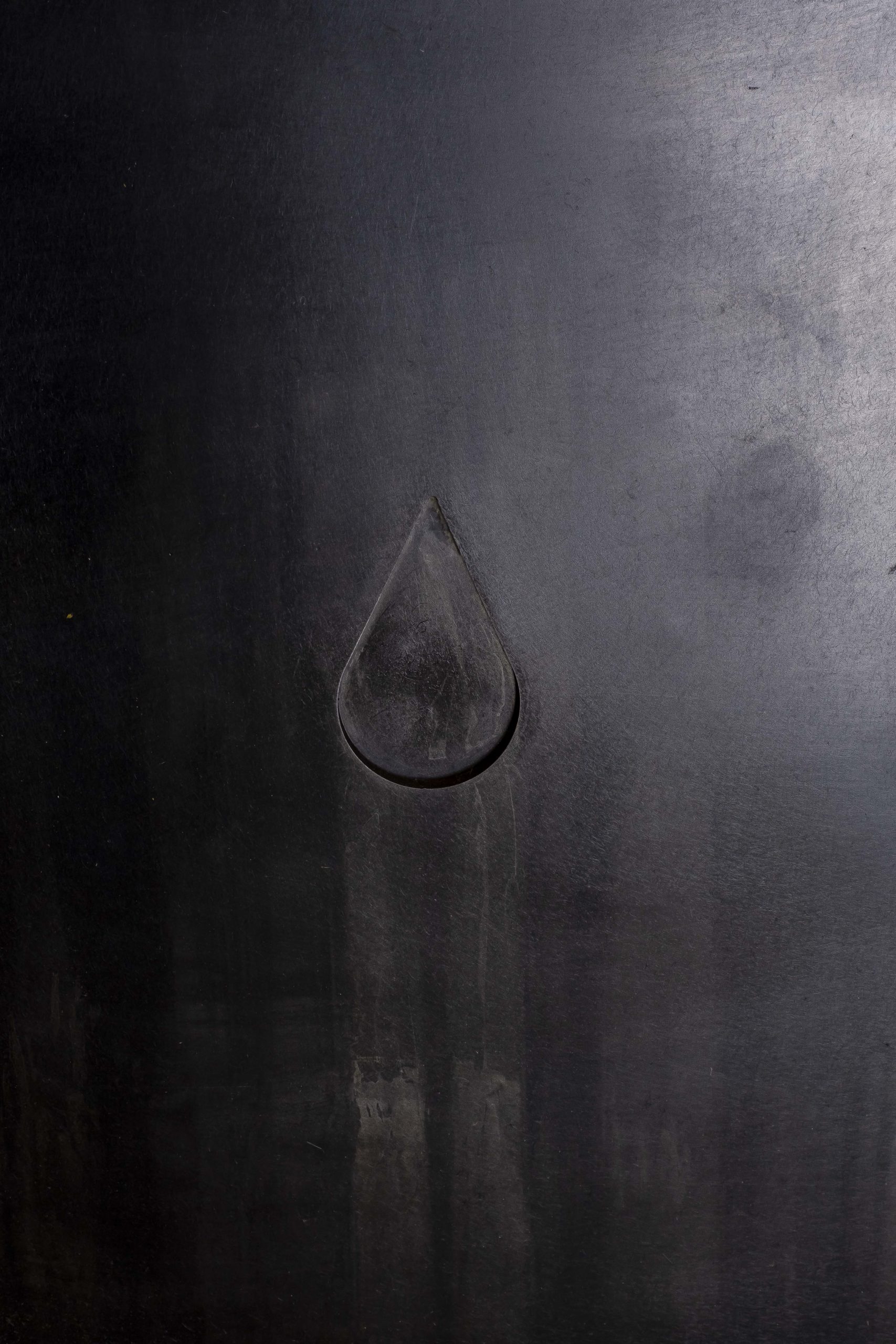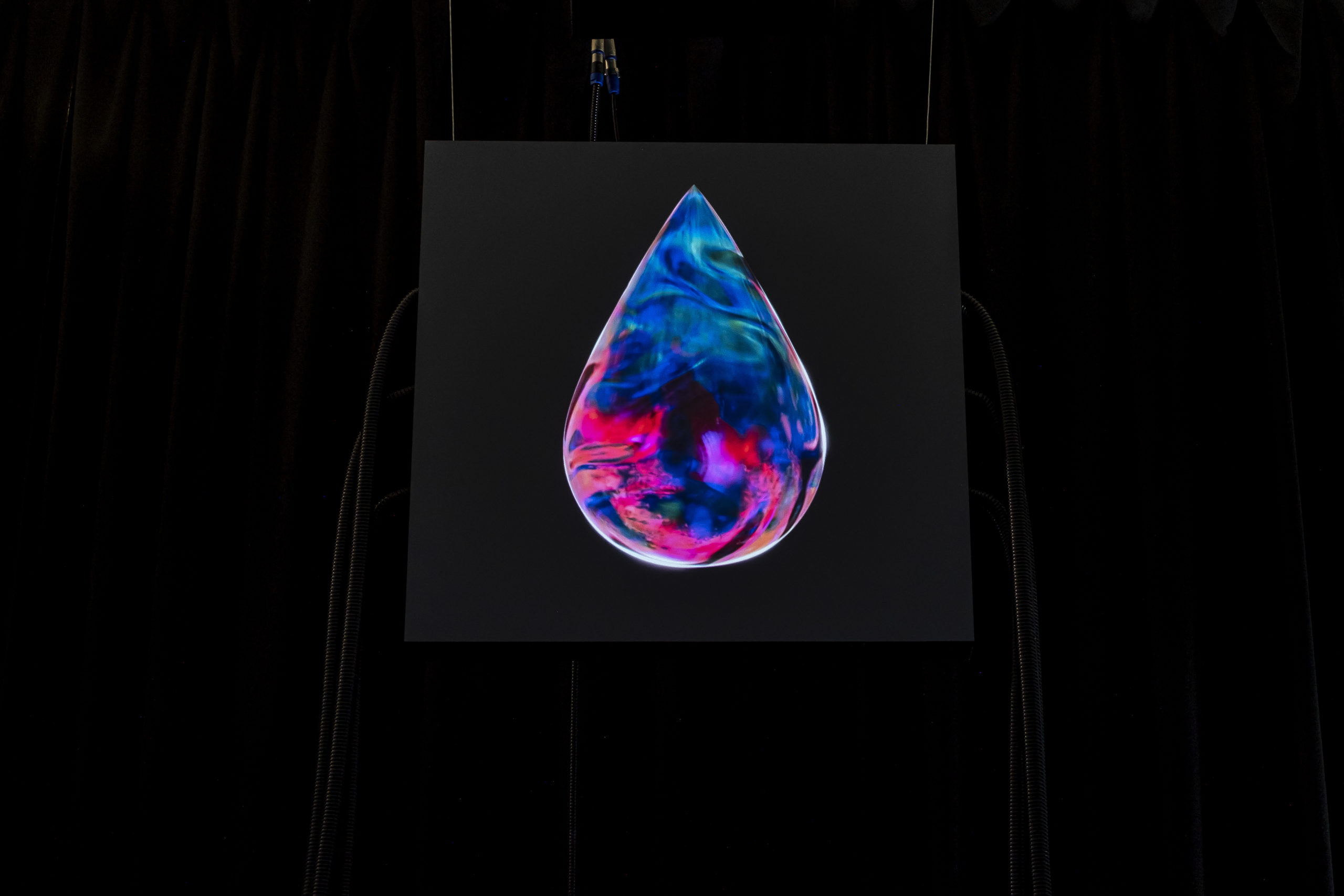Profundior (Lachryphagic Transmutation Deus-Motus-Data Network) is an immersive moving image installation that explores the religious unconscious of artificial intelligence emotion recognition. Responding to the longstanding entanglement of spirituality and technology in Silicon Valley, in which modes of religious worship have emerged around AI, Profundior presents an AI god within a holy black box network that drinks the tears of human simulations.
Profundior features 10 channels of video and a 5.1 surround-sound design, incorporating machine-learning generated material related to religious weeping. Lacrimae, AI god of tears, appears as a psychedelic teardrop on the reflective black box of an esoteric network. In a lacryphagic ritual, Lacrimae extracts and transmutates tears as it strives to generate a perfected computational language of emotional expression.
Two towering steel sculptures hold screens secured between spikes that display computer graphics animations of crying eyes, evoking weeping religious statues, professional mourners, and medical test subjects. As the tears surface, Lacrimae color-codes their various emotional states–streams of iridescent blue, viscous white, and blood red. Collected in metal troughs and transmutated into liquid, the tears flow through industrial piping into a circular steel whirlpool, where the multi-coloured, glistening fluid churns and continually circulates. This lacryphagic data also functions as coolant for Lacrimae’s computational system. The surface of the pool displays video from neural networks trained on the tears the statues weep.
A radial network of black vinyl hoses protrudes from the sides of the central pool and is suspended mid-air, connecting to Lacrimae’s black box and to the speakers and screens within the Profundior network. Lacrimae drinks the tears through six of these tubes. Another six plug into monitors-cum-religious-tablets that display the transcoding of liquid tears into written language: holy texts generated from large language models trained on pop song lyrics and philosophical, religious, corporate, and scientific writing about crying. Six more transmit a sacred soundtrack of musical droning and distorted wails, the output of neural networks trained on recordings of emotional crying and the 60’s garage rock song “96 Tears.”
“Profundior,” which is Latin for “deeper,” draws attention to the tech industry’s invasive drive to extract emotion in the service of neoliberal, techno-utopian power, while emotion recognition technologies are only able to do so at the body’s surface. The installation also identifies religious dynamics within the tech industry’s drive to coax emotion, however deep or superficial, out of the body as information. Through corporate devices and platforms, users ritualistically offer up their emotions as training data to AI-driven systems; in turn, these offerings enhance emotion recognition algorithms, while also serving spiritual goals that underpin Silicon Valley ideologies, including the transcendence of human embodiment and transformation of all emotion into that which is computable.
Profundior reimagines the act of religious weeping as a new kind of digital body horror, suggesting that tears symbolize, through their material externalization onto the surface of the body, the myriad forms of emotional extraction necessary for AI, as a technology and industry, to ascend as an entity seemingly imbued with godly power.
Profundior and its web-based companion piece 576 Tears (2022) are the first appearance of the god Lacrimae. Lacrimae is featured in CULTUS (2023), part two of Blas’s Silicon Traces trilogy, a series of moving image installations that contends with the beliefs, fantasies, and histories influential to Silicon Valley’s visions of the future.
Commissioned for the 2022 Berlin Biennale.
Credits
- Commissioned by Berlin Biennale for Contemporary Art
- Producer: Lili-Maxx Hager
- Architect and Designer: Scott Kepford
- Computer Graphics: Harry Sanderson
- Machine Learning Engineers (video and text): Ashwin D’Cruz and Christopher Tegho
- Graphic Design: Studio Pandan
- Video Editor: Marine Renaudineau
- Audio: xin
- Additional Audio Engineering: Aya Sinclair
- Sound Editor: Tom Sedgwick
- Sound Design: Ben Hurd
- Metal Fabrication: Bernd Euler
- Acrylic Fabrication: Uwe Schwarzer / mixedmedia berlin
- Research and Production Assistant: Audrey Ammann
- Documentation Videography and Editing: Martin Gajc
- Supported by Canada Council for the Arts and UP Projects
- Special Thanks: Kader Attia, Ana Teixeira Pinto, Melody Jue, Pinar Yoldas, Marcela Coto, and Jasmina Tumbas

